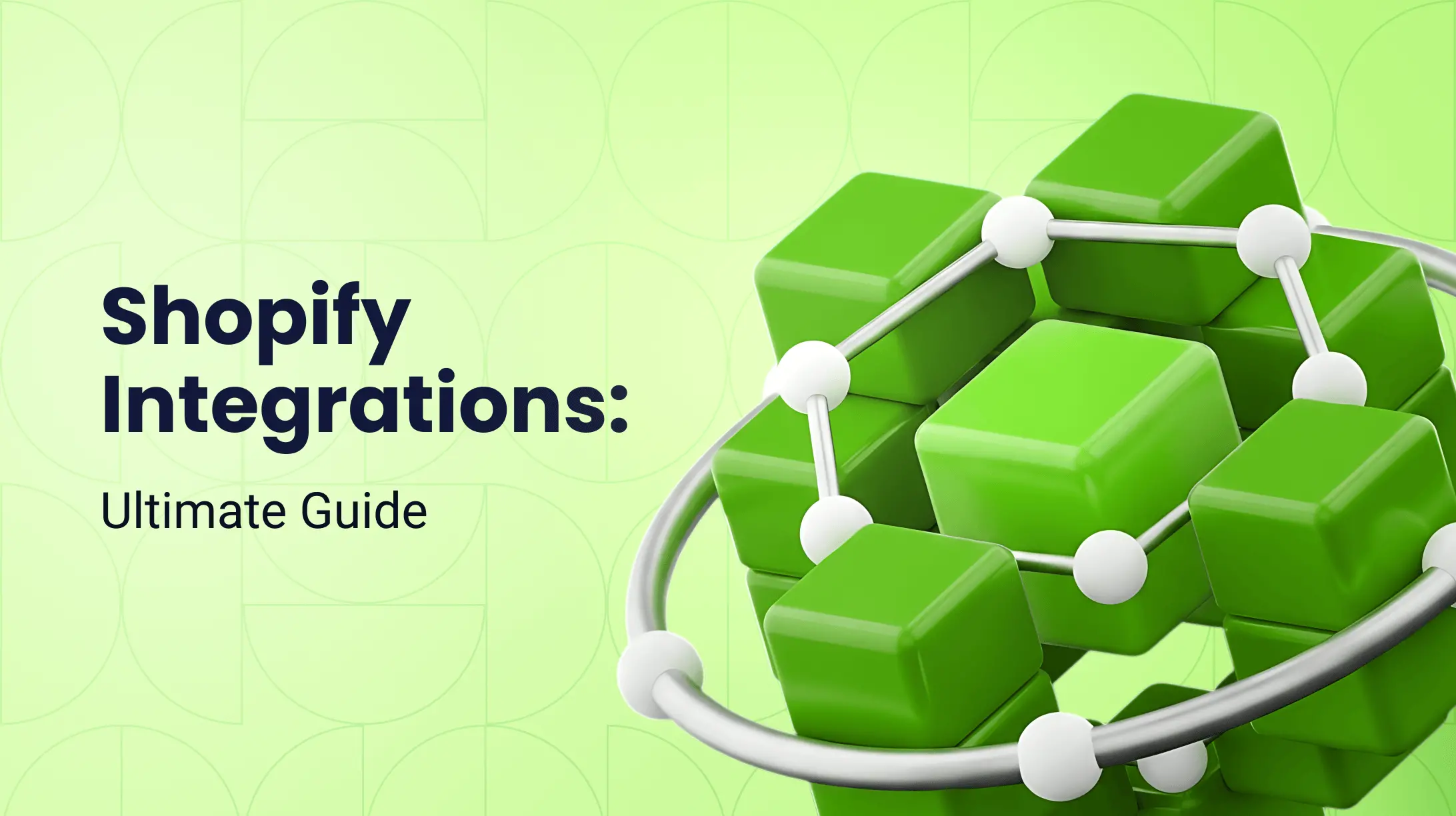0%

Your Shopify store is the cornerstone of your e-commerce business, where all your sales happen and the heart of your success. However, while your Shopify store might have everything you want from a website, there’s one thing you might be missing: a Shopify store application.
Shopify custom app development gives your customers an accessible and simple way to shop for your products and find what they want. With the right strategies, you can significantly increase your sales by investing in a Shopify app.
Individuals interested in learning how to build custom apps in Shopify can search no longer. This article will dive into the world of Shopify custom development to elevate the e-commerce experience. Let’s get started!
What Are Custom Shopify Apps?
Custom Shopify applications are tailored applications created specifically for individual Shopify stores. Unlike public apps available in the Shopify App Store, custom ones are developed to meet the unique requirements of a specific merchant, providing solutions that are perfectly aligned with their business needs.

Key Characteristics of Custom Apps
- Specificity – They are designed to address the unique challenges or requirements of a single store.
- Private Access – These apps are not listed in the Shopify App Store and can only be installed on the intended store.
- Enhanced Functionality – They offer features or integrations that either augment existing functionalities or introduce new capabilities not available through public apps.
- Adaptability – Custom applications can evolve with the store, allowing for modifications and updates as business needs change.
Why Choose a Custom App?
Opting for Shopify custom development offers several distinct advantages tailored to your business’s specific needs:
- Tailored Solutions – Custom Shopify app offers specialized solutions that address niche requirements, ensuring your store operates exactly as needed.
- Seamless Integration – These apps can be designed to integrate smoothly with third-party services or internal systems, enhancing overall efficiency.
- Brand Consistency – Custom apps that align with your brand’s identity deliver a user experience that is consistent and memorable.
- Competitive Advantage – With unique features and customized functionalities, custom apps provide your business with a competitive edge in the market.
The Types of Custom Shopify Apps
Developing Shopify apps is important for merchants looking to tailor their online stores to specific business needs. There are two main types of custom applications, each serving different purposes:
Custom Apps
Custom applications are designed specifically for individual merchants to address unique business requirements. They are not listed on the Shopify App Store and can only be used by the store they are developed for. These apps are ideal for integrating with internal systems or third-party services, or when unique functionalities are needed.
Private Apps
Private applications also cater to individual store needs but are typically less complex. Created directly within the Shopify admin, they are used specifically for backend integrations or tasks. These apps are often employed for simple functions like syncing inventory with external systems or adding basic custom features.
How to Create an App for My Shopify Store
When you aim to create a custom application for your Shopify store, a structured approach ensures success. A Shopify app development guide outlines the key steps to create an app that fits your store's unique business needs:
1. Set Up Your Development Environment
To begin your project, you'll want to set up your development environment first. You can register as a Shopify Partner to access essential tools, then create a development store where you can safely build and test your application. It's helpful to familiarize yourself with Shopify’s extensive documentation to understand their APIs and development practices.
2. Choose Your Technology Stack
When choosing technologies for development, many developers find Node.js effective for server-side scripting and React useful for building interactive UIs. The Shopify CLI can be particularly valuable as it automates tasks and simplifies many aspects of the development process.
3. Initialize and Develop Your App
You might start by creating your application using the Shopify CLI. The command $ shopify appcreate node will set up the basic structure, and running $ shopify app serve lets you test features in real-time to ensure everything works as intended.
4. Build Core Features
You’ll need to focus on core functionalities like inventory management or customer tools that meet your specific needs. Shopify’s GraphQL or REST APIs can be integrated for effective data management, and Polaris (Shopify’s design system) helps maintain a consistent, user-friendly interface.
5. Test and Debug
During this phase, thorough testing on your development store will help ensure all functionality works properly. Performance optimization leads to smoother operation, and implementing robust error-handling prepares your app to manage unexpected issues effectively.
6. Deploy Your App
When you're ready, you can install the application on your live store and configure its settings. Ongoing monitoring with analytics tools provides valuable insights, while user feedback helps continuously refine and enhance the app with new features and improvements.
Get in touch
with our expert
Discuss your project requirements and get a free estimate.
Get in touch
with our expert
Discuss your project requirements and get a free estimate.
Common Challenges and Solutions in Shopify Custom App Development
While developing custom Shopify applications delivers powerful business benefits, developers often encounter technical hurdles that require strategic solutions. Here are the most common challenges with proven approaches to overcome them:
API Integration Issues
Many developers struggle with inconsistent API responses and rate limiting when integrating with Shopify's platform. The most effective approach combines comprehensive error handling with automatic retry logic for failed requests. Implement webhooks selectively for critical events only, and consider using a queueing system to manage high volumes of notifications without overwhelming your servers.
Performance Bottlenecks
Slow app performance directly impacts merchant operations. Address this by implementing Redis caching for frequently accessed data, optimizing database queries through indexing, and batching API calls where possible. Always conduct load testing that simulates peak traffic conditions before deployment to identify potential slowdowns.
Security Vulnerabilities
Custom apps handling sensitive data require robust protection measures. Enforce OAuth 2.0 best practices for all authentication flows and encrypt data both in transit (TLS) and at rest (AES-256). Regularly audit and minimize API permissions, ensuring your app only requests necessary access scopes following the principle of least privilege.
UI/UX Inconsistency
Apps that clash with Shopify's native interface create poor user experiences. Solve this by building all frontend components using Shopify's Polaris design system, which guarantees visual harmony. Complement this with responsive design testing across desktop, tablet, and mobile views to ensure flawless rendering.
App Review Compliance
Shopify's rigorous approval process often catches developers unprepared. Avoid rejections by maintaining detailed technical documentation that justifies all data access requirements. Optimize your API consumption patterns to stay well below rate limits, and use Shopify's pre-submission checklist to verify compliance with all platform requirements before applying for approval.
Ongoing Maintenance
Post-launch challenges require proactive solutions. Implement monitoring through both Shopify Analytics and third-party tools like New Relic to track performance metrics. Establish a process for regular security audits and version updates, and create structured feedback channels to gather merchant input for continuous improvement.
Create App for Shopify Store Using Transform Agency
Shopify custom development for your store is critical for building brand awareness and reaching new customers. While you can navigate through creating a Shopify app individually, you don’t have to go through the process alone – providers like Transform Agency can help you make the perfect Shopify app.
Transform Agency provides Shopify mobile app development services, so all e-commerce store owners can start selling on mobile devices with an accessible app experience.
Contact Transform Agency today to discuss your e-commerce project and start building the perfect Shopify application!
FAQ
What is the Shopify app for?
Shopify apps are designed to extend the functionality of your store, providing additional features such as inventory management, marketing tools, and customer engagement enhancements, tailored to specific business needs.
How to allow custom app development in Shopify?
To enable custom app development, you must register as a Shopify Partner. This gives you access to essential tools and resources. Next, create a development store where you can safely build and test your app.
How to create a custom app in Shopify?
Creating a custom app involves setting up your development environment by becoming a Shopify Partner and creating a development store. Choose your technology stack, such as Node.js and React. Use the Shopify CLI to initialize and develop your app, ensuring to test and debug extensively before deployment.
Can you turn your Shopify store into an app?
Yes, you can transform your Shopify store into a mobile app using app builders available on the Shopify App Store, which make it easy to create a mobile-friendly application.
How much does it cost to develop a Shopify app?
The cost of developing a Shopify app varies widely depending on its complexity. Basic apps may start at a few thousand dollars, while more complex apps can be significantly more expensive. Keep in mind that ongoing maintenance and updates will also contribute to the overall cost.

Written with the assistance of Sergey Girlya
Adobe Commerce Business Practitioner | Certified PSM & PSPO at TA
Sergey ensures project success by validating business cases, defining success metrics, and identifying sustainable benefits. His proactive approach leverages existing systems, processes, and data to deliver additional value. Serge excels in planning, executing, monitoring, and controlling all aspects of the project lifecycle, ensuring meticulous attention to detail and strategic oversight.
Sergey ensures project success by validating business cases, defining success metrics, and identifying sustainable benefits. His proactive approach leverages existing systems, processes, and data to deliver additional value. Serge excels in planning, executing, monitoring, and controlling all aspects of the project lifecycle, ensuring meticulous attention to detail and strategic oversight.


